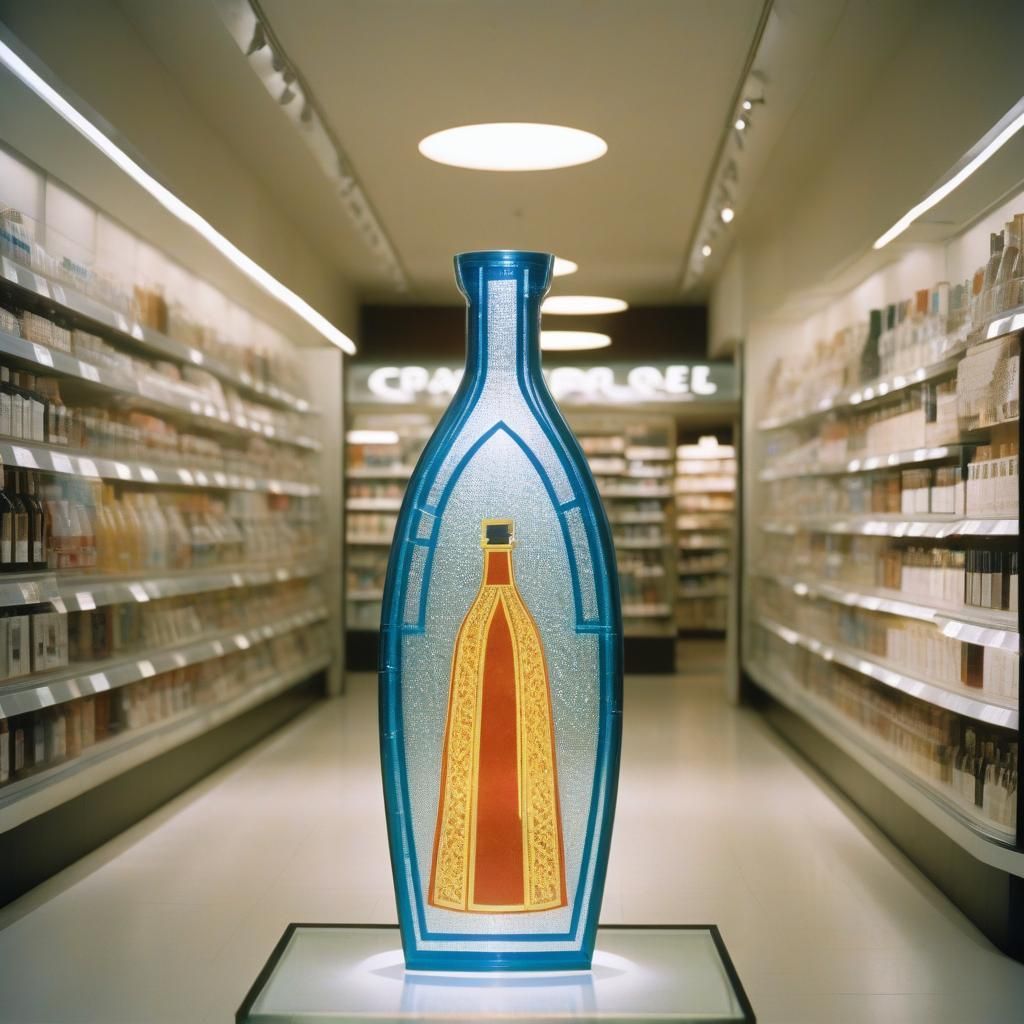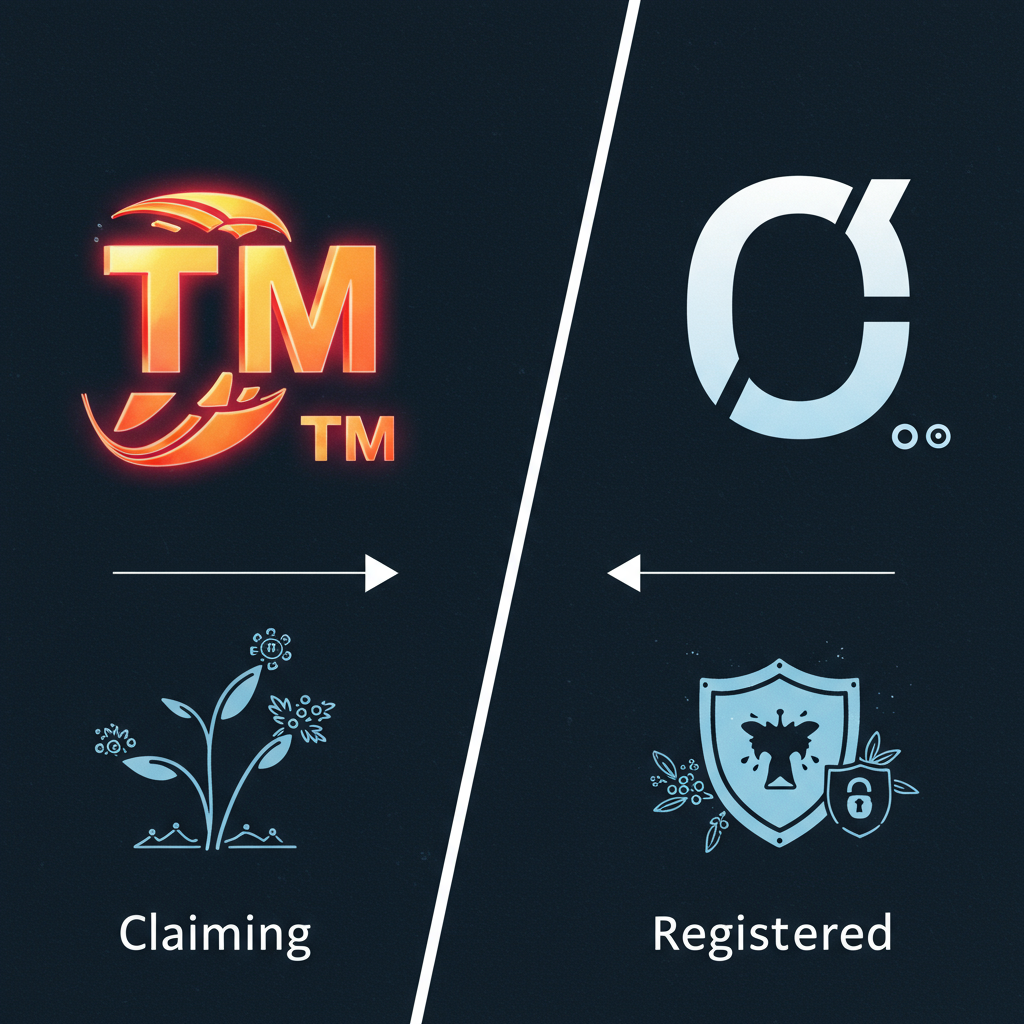How Trademarks Differ by Country
Territoriality is King

Navigating the Global IP Maze
Ever dreamt of your Aussie brand taking the world by storm? Your legendary coffee blend destined for New York, or your innovative tech gadget revolutionising Europe? That's the dream, right? But hold your horses, because while your brand might be a megastar here, protecting its name and logo can change faster than a Sydney southerly once you cross international borders.
Thinking a trademark in your home country is a global shield is a common pitfall. Intellectual property, especially trademarks, is intensely territorial. What flies in Perth might flop in Paris if you haven't laid the proper legal groundwork. Understanding these crucial differences isn't just about playing by the rules; it's about building a robust, global brand that can withstand any legal sumo smackdown.
This isn't just dry legal jargon; it's about safeguarding your passion, innovation, and hard-earned reputation on the world stage. So, buckle up as we embark on a thrilling global tour, uncovering the fascinating, and sometimes tricky, ways trademarks differ by country.
Key Takeaways:
- Territoriality is King: Trademark rights are country-specific; an Australian registration doesn't protect you in the US or China.
- First-to-File vs. First-to-Use: These fundamental systems dictate who gets trademark rights – registration vs. prior commercial activity.
- Madrid Protocol is Your Mate: This international system streamlines multi-country applications, but it's not a one-stop shop.
- Local Nuances are Crucial: From classification systems to enforcement and cultural considerations, every country has its quirks.
- Proactive Protection is Power: Registering your trademark early and strategically is your best defence against squatters and disputes.
The Basics of Trademark Protection: Your Brand's First Line of Defence
Before we jet-set globally, let's grasp the core concepts of trademark protection. Imagine your brand name, logo, or slogan as a precious treasure. A trademark is the legal moat you build around it, stopping others from pilfering your identity.
Globally, trademark systems broadly fall into national and international camps.
- National systems: Require direct application to each country's IP office. Think individual tickets for every leg of a multi-city trip.
- International systems (like the Madrid Protocol): Offer a streamlined way to apply for protection in multiple countries with a single application. Like a global travel pass, simplifying admin.
Even with international systems, national laws still apply. It's not a single global trademark; it's a bundle of national rights managed centrally.
What about those international agreements? The Madrid Protocol, the Paris Convention, and the TRIPS Agreement are the heavyweights, each playing a crucial role:
- Madrid Protocol: Your best mate for simplifying international trademark applications. File one application, in one language, pay one fee, and seek protection in up to 130 member countries. A game-changer for efficiency, but protection still relies on each designated country's laws.
- Paris Convention: This vital treaty establishes fundamental principles, ensuring national treatment and granting a "right of priority" (six months to file in other member countries while claiming your original filing date).
- TRIPS Agreement: Sets minimum standards for IP protection and enforcement for all WTO member countries, aiming for a fairer playing field and reducing counterfeiting.
These agreements don't create a single global trademark, but they make the international IP landscape far less like the Wild West.
Trademark Registration Processes in Major Countries: A Global Whirlwind Tour
Let's explore how trademark registration plays out in major economies. You'll quickly see that while the goal is protecting your brand, the paths can be wildly different.
A. United States (USPTO - United States Patent and Trademark Office)
The USA is a maverick, largely operating on a "first-to-use" system. Trademark rights are primarily acquired by using the mark in commerce, not just by registering it.
- Proving Commercial Use: Be prepared to show genuine use of your trademark with goods/services (sales, advertising). While common law rights exist without registration, USPTO registration offers far stronger legal protection and nationwide recognition.
- Federal vs. State Trademarks: Federal registration (USPTO) provides nationwide rights; state registration covers only that state. For growing businesses, federal is key.
- Trademark Classifications: The US uses the Nice Classification system (45 classes) for goods and services.
B. European Union (EUIPO - European Union Intellectual Property Office)
The EU offers a truly streamlined approach for its member states.
- EU Trademark (EUTM) vs. National Trademarks: The EUTM is a single registration protecting all 27 EU member states via one EUIPO application – fantastic for Europe-wide businesses. National registrations are still an option for highly localised businesses or to avoid EUTM opposition.
- Community-Wide Protection: The EUTM's superpower – one application, one fee, protection across a massive economic bloc.
- Nice Classification System: Also used by the EUIPO.
C. United Kingdom (UKIPO - United Kingdom Intellectual Property Office)
Brexit threw a spanner in the works for trademarks!
- Post-Brexit Changes: Before Brexit, a single EUTM covered the UK. Now, for UK protection, you must register separately with the UKIPO.
- Differences from EU: UK trademark laws mirror EU law (shared history) but are now distinct. New EUTM applications post-Brexit won't cover the UK.
- Importance of Separate UK Registration: If the UK is a key market, securing a dedicated UK trademark is crucial for Aussie businesses.
D. China (CNIPA - China National Intellectual Property Administration)
China, a heavyweight titan in the global economy, has a notoriously "first-to-file" system, where many foreign businesses stumble.
- First-to-File System: The first to file generally owns the rights, regardless of prior use. This is a massive difference from Australia and the US. If you plan to enter China, register your trademark before sales or marketing.
- Trademark Squatting: Due to strict first-to-file rules, China is infamous for "trademark squatting" – opportunistic individuals registering foreign brands to sell them back or use for counterfeits. A legal minefield.
- Protecting Trademarks: The golden rule for China: file early, file broadly. Register your brand name, its Chinese translation, phonetic variations, and logo across all relevant classes. A local Chinese IP attorney is almost always non-negotiable.
E. Japan (JPO - Japan Patent Office)
Japan operates an examination-based system with unique characteristics.
- Unique Requirements: The JPO thoroughly examines for distinctiveness and prior marks. Japan also considers a broader range of "marks" (colours, sounds, smells).
- Kana/Kanji Variations: When trademarking in Japan, consider how your brand name is perceived in Japanese. Registering original Roman alphabet, Katakana (foreign words), or Kanji (Chinese characters) representations is vital for comprehensive protection.
- Enforcement & Remedies: Japan has robust legal frameworks for enforcement, including injunctions and damages.
F. India (IP India - Controller General of Patents, Designs & Trademarks)
India's trademark system is a fascinating mix of first-to-use and first-to-file principles.
- Mixed Principles: While registration is first-to-file, India recognises "prior use" rights (common law rights from continuous use). This can lead to complex disputes.
- Lengthy Approval Process: Trademark approval in India can be notoriously lengthy, sometimes years. Patience is a virtue.
- Non-Traditional Trademarks: India is progressive in recognising non-traditional trademarks (sounds, smells, shapes) if distinctive.
G. Australia (IP Australia - Australian Intellectual Property Office)
Our home turf! Australia's pragmatic system often aligns with the US approach, but with its Aussie flavour.
- First-to-Use System: Like the US, Australia is fundamentally "first-to-use." While IP Australia registration provides strong statutory rights, common law rights can exist through continuous use of a distinctive mark. Relying on common law is riskier than having a registered trademark.
- Registration Process: Relatively straightforward: application, examination, opposition period. Key requirements include distinctiveness and no similarity to existing marks.
- Madrid Protocol: Australia is a proud member, simplifying international expansion by filing a single international application. Foreign businesses can also designate Australia.
- Indigenous Cultural Trademarks: A unique and important aspect. IP Australia actively works to protect Indigenous cultural expressions (Aboriginal art/symbols) from misappropriation, highlighting ethical and legal dimensions beyond commercial interests.
Key Differences in Trademark Law by Country: The Nitty-Gritty
What are the big takeaways from our global tour? It boils down to critical distinctions that can make or break your international brand strategy.
First-to-Use vs. First-to-File Systems
This is arguably the most significant divergence.
- First-to-Use (e.g., Australia, USA): Rights established by first actual commercial use. Registration enhances rights.
- First-to-File (e.g., China, most of Europe): Rights granted to the first person to apply for registration. Prioritises swift registration, prone to trademark squatting if you're not quick.
Length of Trademark Validity and Renewal Processes
Many countries offer a 10-year term for trademarks with indefinite renewals, but specifics vary (shorter initial terms, different grace periods). Missing a renewal deadline can mean losing your precious trademark, so global tracking is paramount.
Enforcement Mechanisms and Legal Remedies
How you protect your trademark from infringement also differs:
- Injunctions: Stopping activity.
- Damages: Monetary compensation.
- Customs Seizures: Preventing counterfeit goods.
The speed and effectiveness of these remedies vary wildly. Some countries have specialised IP courts. Our article on this dives deeper into enforcement, but specifics always depend on local laws.
Recognition of Non-Traditional Trademarks (Colors, Sounds, Smells)
While traditional marks (words, logos) are universal, "non-traditional" marks acceptance varies. Some countries (India, Japan) are more open. If your brand relies on a distinctive colour, sound, or scent, research its registrability in each market.
How International Businesses Can Protect Their Trademarks: Your Global Game Plan
Navigating this complex landscape might seem daunting, but a clear strategy means your Aussie brand can conquer the world without IP roadblocks.
When to Register in Multiple Countries
The golden rule: register your trademark in every country where you currently do business or plan to do business soon. Don't wait; proactive registration is your best defence. Consider:
- Current Markets: Where are you actively selling?
- Future Expansion: Which countries are on your roadmap?
- Manufacturing/Sourcing: Even if you don't sell there, protect against counterfeiting at the source.
- Online Presence: If your website targets consumers in a specific country, consider registration.
Using the Madrid Protocol for International Trademark Applications
The Madrid Protocol is your most efficient tool for international trademark protection. File one application through IP Australia and designate member countries.
Why the Madrid Protocol is a champion:
- Cost-Effective: Often cheaper than individual applications.
- Simplified Management: One system for your international portfolio.
- Flexibility: Add more countries as your business grows.
A key point (the "central attack" risk): if your base Australian application is cancelled within five years, your international registration might also be affected. This highlights the importance of a strong home-country trademark. For more, click to see this article.
Working with Local Trademark Attorneys for Country-Specific Issues
While the Madrid Protocol simplifies, it's no substitute for local expert advice. For complex issues, specific country nuances, or disputes, a local trademark attorney is invaluable. They understand local laws, market, and enforcement strategies. Think of them as your local guide through the legal wilderness.
Case Studies: Trademark Conflicts in Different Countries
History is littered with brands battling across borders – real-world legal dust-ups illustrating why understanding international trademark differences is critical.
Imagine the high-stakes drama of a global brand finding their name hijacked in a crucial new market!
- Apple vs. Proview (China): A classic "first-to-file" nightmare. Proview registered "IPAD" in China in 2000. Apple, despite global fame, faced a massive legal battle and reportedly paid $60 million USD to acquire the rights. A loud warning about early filing in "first-to-file" jurisdictions.
- Hermès vs. i-Mate (Singapore/International): Hermès, the luxury fashion house, sued i-Mate over a "Hermès" mobile phone. This case highlighted global reach and preventing dilution for well-known trademarks, even in unrelated categories.
These sagas underscore a crucial lesson: ignorance of international trademark law is not a defence, and it can be a very expensive lesson.
Conclusion: Your Brand's Global Armour
There you have it – a whirlwind tour of how trademarks differ by country. The global marketplace is a tapestry of diverse legal systems. For any Aussie business with global ambitions, domestic protection isn't enough.
Understanding country-specific trademark laws cannot be overstated. It's the difference between building a rock-solid global brand and watching your hard work crumble due to an unforeseen legal hurdle.
What steps should your business take for global trademark protection?
- Strategise Early: Before any international launch, conduct thorough trademark searches and develop a comprehensive filing strategy.
- Embrace the Madrid Protocol: Leverage this powerful tool for efficient multi-country applications, using your Australian trademark as your base.
- Think Local, Act Global: Don't shy away from direct national filings where strategic or necessary, especially in "first-to-file" countries like China where local expertise is paramount.
- Engage Experts: Partner with experienced IP professionals, both in Australia and your target markets. Their guidance is invaluable.
- Monitor and Enforce: Trademark protection isn't "set and forget." Continuously monitor for infringers and be prepared to enforce your rights.
By treating your trademark as the valuable asset it is, and understanding the global game, you're not just protecting a name or a logo; you're safeguarding your future, reputation, and slice of the global pie. Don't leave your brand's international future to chance; get your IP armour on!
FAQs:
Q1: Do I need a separate trademark registration for every country I sell in?
A: Generally, yes. Trademark rights are territorial. While systems like the Madrid Protocol simplify applications, a registration in one country doesn't automatically protect you in another.
Q2: What's the biggest risk if I don't register my trademark internationally?
A: Trademark squatting, especially in "first-to-file" countries like China. Someone could register your brand name, forcing you to rebrand, pay a hefty sum, or face costly legal battles.
Q3: Is the Madrid Protocol enough for all my international trademark needs?
A: The Madrid Protocol is efficient for broad coverage. However, for critical markets, especially "first-to-file" countries or those with unique local nuances (like China), supplementary national filings or local attorney assistance might be highly advisable for comprehensive protection.
Q4: How do "first-to-use" and "first-to-file" systems differ, and why does it matter?
A: "First-to-use" (Australia, US) grants rights based on first commercial use. "First-to-file" (China, EU) grants rights to the first to register. This matters because in "first-to-file" countries, delaying registration can mean losing your brand name to a squatter.
Q5: What's the role of IP Australia in international trademark applications?
A: As a Madrid Protocol member, IP Australia acts as your "Office of Origin." You can file an international application through them, designating other member countries. IP Australia facilitates the process, but protection depends on each designated country's IP office.











